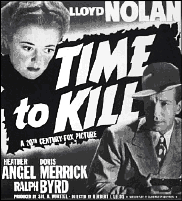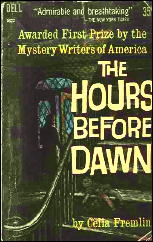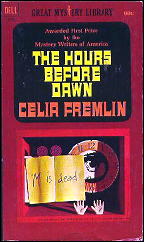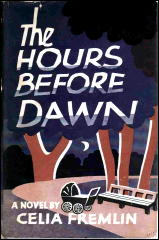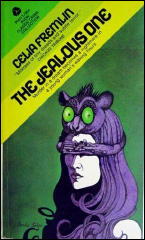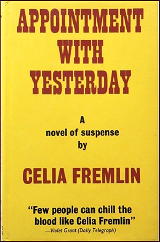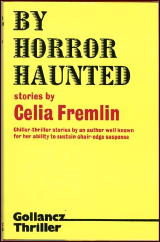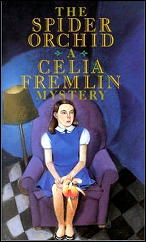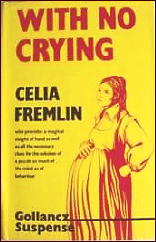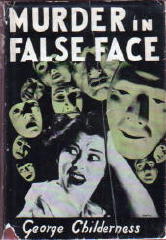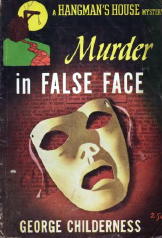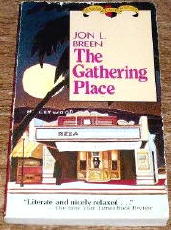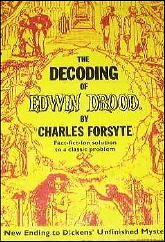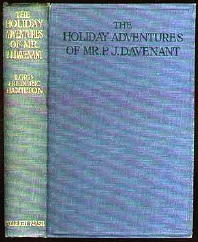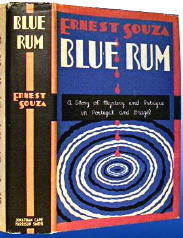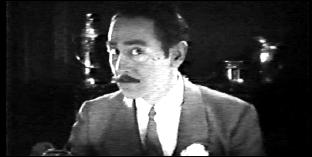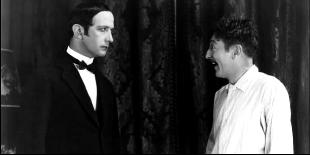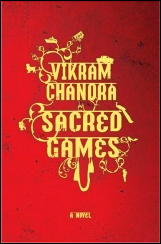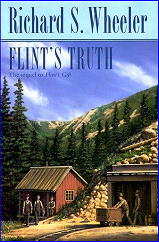A REVIEW BY DAVID L. VINEYARD:
CRAIG RICE – Trial by Fury. Simon & Schuster, hardcover, 1941. Paperback reprints include: Pocket 237, 1st printing, October 1943. Dell D187, Great Mystery Library #2, 1957. International Polygonics, 1991.
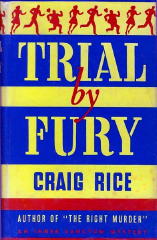
When Jake and Helene Justus escape the hot summer in Chicago, they find themselves in the Jackson County Court House in Jackson, Wisconsin, just in time to witness the murder of ex-Senator Joseph Peveley (“It can’t be murder, that’s the second murder in thirty-two years.”), and naturally Jake being Jake, he ticks off the less than brilliant local lawman and finds himself jailed as a material witness. “It’s none of my business, and I don’t know that I care very much, but who might have wanted to murder your ex-Senator?”
So the leggy blonde Helene does what any sensible wife would do. She sends to Chicago for that rumpled, red haired, bibulous Don Quixote of the law, the one and only John J. Malone, defender of the weak, savior of the downtrodden, and patron of more bars than the Bar Association can shake a stick at, who arrives by bus, hot bothered, and as usual brilliant.
In fact, before he even gets Jake and the local prosecutor (who has been arrested by the same lawman) out of jail, he finds the murder weapon and shows how the crime was committed.
Now all he wants to do is get himself out of Jackson and back to noisy, hot Chicago: “Here they are living in the age of innocence, and in Chicago were living in the age of consent.”
But then when he goes to cash a check and they blow the bank out from under him, it delays his departure.
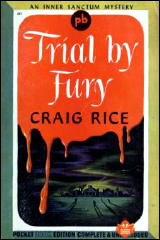
“You’re not dead,” Helene said.
Malone shut his eyes again. “I am too dead,” he told her.
But he isn’t, though someone else is, and as the doctor remarks the city has about four murders every thirty-two years. “There’s two more coming.”
So reluctantly Malone finds himself delving into the case, and being Malone he naturally does it between drinks, with a little help from a local who seems to be under the impression Hoover is still in office and Prohibition is still in effect:
“The liquor is a little different here too.”
“Don’t you like it?”
“I like it, but it has a way of sneaking up on you when you don’t expect it …”
And before long, there is yet another murder, one which is preceded by Malone jumping in a river to save a damsel in distress; a body found buried under a concrete slab in a most respectable basement; a less than respectable young lady is killed; and Jake ends up running from a lynch mob with Malone and a slightly inebriated bloodhound named Hercules on his trail, with a bottle of Dollar Gin their only clue.
Of course Malone solves it, if only after polishing off the Dollar Gin and the local madhouse burns down while he and Hercules send a lynch mob packing.
“Do you want to go to your grave with the blood of an innocent man on your hands for a lousy ten bucks apiece?”
In the same instant, Hercules, somewhere in the bushes beyond sent up a heart rending howl.
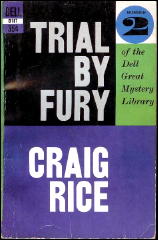
An uneasy, frightened movement began in the crowd, slowly men began pulling away in little groups and starting for their cars. A piece of loose tender in the burning building behind Malone suddenly blazed up and sent an unearthly light over the scene. In the same instant Hercules let loose with another dreadful howl, and the movement toward the parked cars became a panicked rout.
Malone spun around and threw the cigar in the smoldering flames. There wasn’t much difference, after all, between a lynch mob and a jury in a criminal court. You could convince ’em, or you could reason with ’em, or you could pray with ’em, but the simplest thing to do was to scare ’em. He wished he could take Hercules into a courtroom with him sometime.
Trial by Fury may well be Rice best novel in the Malone opus. It is funny, involving, fast moving, the detective work is genuine, and the humor never flags or falls flat.
The characters belong to that bucolic Hollywood version of an America that never existed, but Rice and Malone both know that under that facade of 4th of July picnics and Sunday morning services there are motives and actions enough for murder most foul.
Jake is his usual less than bright self, and Helene surely the most beautiful wife a lucky fool could have. Malone sulks, pouts, drinks, smokes his cigars, looks rumpled, and proves brilliant and in this one even falls in love — albeit with an unlikely soul mate — Hercules, a giant half Bloodhound, half Great Dane, who is possessed of a courageous soul and a detective’s unwillingness to ever give up the scent.
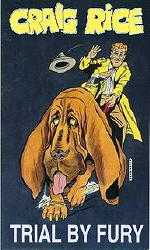
It was just as they drove under the elevated that Malone snuggled back against the seat cushion and closed his eyes. Two seconds later he was asleep, a seraphic smile on his face.
“What do you suppose he’s dreaming about?” Helene asked.
“Who, Malone or Hercules?”
She looked down at the sleeping pair and shook her head.
“I wonder how that dog found his way into the car?” she mused.
Jake took her free hand in his and looked at her tenderly.
“Love,” he said. “Will always find a way.”
And in all honesty, I don’t think I can top that. Find this one and read it. It is the screwball school personified, a first class piece of detective work, a drop dead funny novel, and Malone and Hercules are one of the great romances in literature. Unless you are a cat person, or have a heart of stone.
